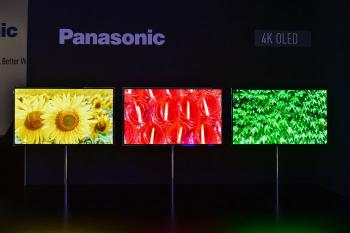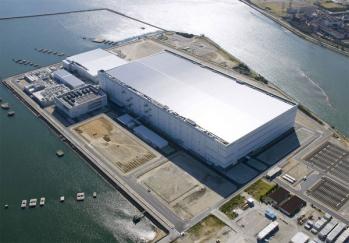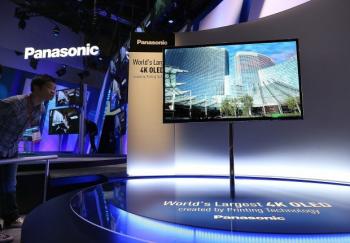According to the OLED Association, Panasonic said that they are progressing fast enough to launch the 55" (probably 56") UHD OLED TV in Q4 2013. Panasonic will start mass production in its Himeji Pilot Gen-5.5 line (which means initial production will be very limited). If this report is true it means a real acceleration as Panasonic previously said they will only be ready in 2015 (although you may say that the current Himeji line will not be real mass production in any case).
 Panasonic OLED TV prototype, IFA 2013
Panasonic OLED TV prototype, IFA 2013
Panasonic's OLED TV panel, unveiled in January 2013, is produced using ink-jet printing and uses an RGB subpixel matrix (direct-emission). Panasonic is using Sumitomo's PLED materials, and AUO's oxide-TFT Substrates. The company is collaborating with Sony on OLED technologies.
 Panasonic Himeji Fab
Panasonic Himeji Fab
Very little is actually known about Panasonic's prototype OLED panels. Panasonic says these use an "all-printing" method, and we assume that they mean inkjet printing, but it's not clear whether all OLED materials are printed or perhaps just some of them. We do know that AUO supplies the Oxide-TFT backplanes, to both Sony and Panasonic.
 Panasonic OLED TV prototype, CES 2013
Panasonic OLED TV prototype, CES 2013
In March 2013 Sumitomo revealed that Panasonic used their PLED materials in the prototype OLED TV shown at CES 2013. Panasonic and Sumitomo has been working together towards OLED TVs since 2009, but we're still not sure what kind of materials Panasonic are using exactly in their TV exactly. In any case, we do know that in 2011 Sumitomo built a large PLED material factory aiming for OLED TV applications in a several billion yen investment. The annual output of their new Osaka plant will be enough to produce 4-5 million 40" OLED TVs. Sumitomo says their PLED materials are 'good enough' for OLED TV applications. Their blue OLED emitter now has a lifetime of over 20,000 hours.


It would probably be a hard blow to LG and Samsung. On the other hand, competition is always good for progress and consumers.